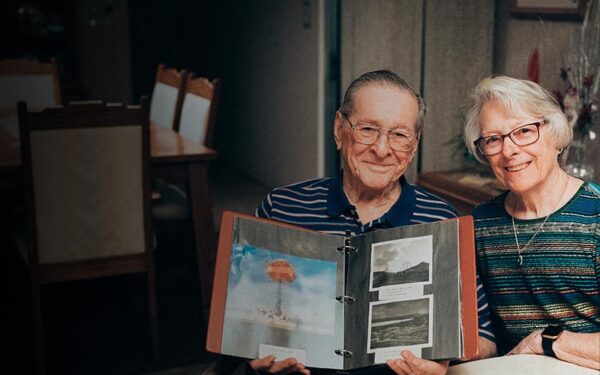70 Years Making History

A Historical Highlight Honoring Idaho National Lab
The 70-year journey from a National Reactor Testing Station (NRTS) to the current Idaho National Laboratory saw a nearly empty 890-square-mile section of desert in southeast Idaho become the leading Nuclear Energy Research and Development Laboratory in the United States.
On February 18, 1949, the Atomic Energy Commission picked the Naval Proving Ground in eastern Idaho as the NRTS site. As the first team of laborers, scientists, planners, and administrators looked out at the windswept desert, they could not have dreamed of what was to come.
The Atomic Energy Commission (AEC) was formed shortly after WWII with a main role to oversee atomic and energy development. It focused mainly on the burgeoning Cold War and on building enough nuclear weapons to keep pace with the United States’ chief rival, the USSR. However, the AEC was also searching for a place to build reactors and test their capabilities, and the NRTS desert site fit the bill.
Initially, the missions at the INL were the development of civilian and defense nuclear reactor technologies as well as the management of spent nuclear fuel. Fifty-two reactors, most of them first-of-a-kind, have been built at the site. Three remain in operation today.
Those 52 reactors include the Navy’s first prototype nuclear propulsion plant and test reactors that can replicate the long-term effects of radiation on materials and replicate accident conditions—making it the only research site where the full nuclear cycle can be studied in one place. Every nuclear reactor in operation around the world–more than 400 of them–can trace some aspect of their existence back to R&D conducted in the eastern Idaho desert.
The success of one of the early reactors, EBR-1, designed by Dr. Walter Zinn and his team, proved that nuclear power could be harnessed to produce electricity. When the reactor went online on December 20th, 1951, it was the first time that the process of nuclear fission had ever led to electrical generation. Soon after, EBR-1 was producing enough electricity to power the complex in which it was housed.
The innovation of those first four lightbulbs lit with nuclear power sparked decades of scientific breakthroughs and a commercial nuclear energy industry that today generates 20 percent of America’s electricity and 56.1 percent of our carbon-free electricity – more than solar, wind, hydro and geothermal combined.
The R&D foundation established by those first teams did much more than enable the commercial nuclear energy industry, however.
In 1967 the Advanced Test Reactor was built at the Site–based on a radical and innovative cloverleaf design developed by a research physicist named Deslonde deBoisblanc as he traveled a lonely stretch of U.S. Highway 20. Experiments at ATR allowed for the evolution of the U.S. nuclear Navy. Refueling its submarines was an expensive and time-consuming process, and the innovations from ATR allowed them to drastically increase the number of years between refueling.
In 2017 INL restarted the Transient Reactor Test (TREAT) Facility, which had operated from 1959-1994. The restart of one of the world’s most capable and flexible reactors has allowed the U.S. to test nuclear fuel under accident conditions. The restart brings back a key component for advanced nuclear fuels and reactor testing in the United States.
Today, numerous new and expanded missions are happening at the desert site and the growing Idaho Falls complex of the INL. In conjunction with the National and Homeland Security Directorate, experts work with industry and government to protect the nation’s critical infrastructure from man-made and natural threats.
Scientists are also building the radioisotope power systems that enable NASA missions to Mars, Pluto and beyond.
INL scientists, researchers, and support staff, of course, still work on that initial mission: nuclear reactor technology. They are working to extend the lives of the U.S. nuclear reactor fleet while helping the industry develop and deploy the next generation of reactors including the world’s first small modular reactor.
Here’s to the next 70 years!


